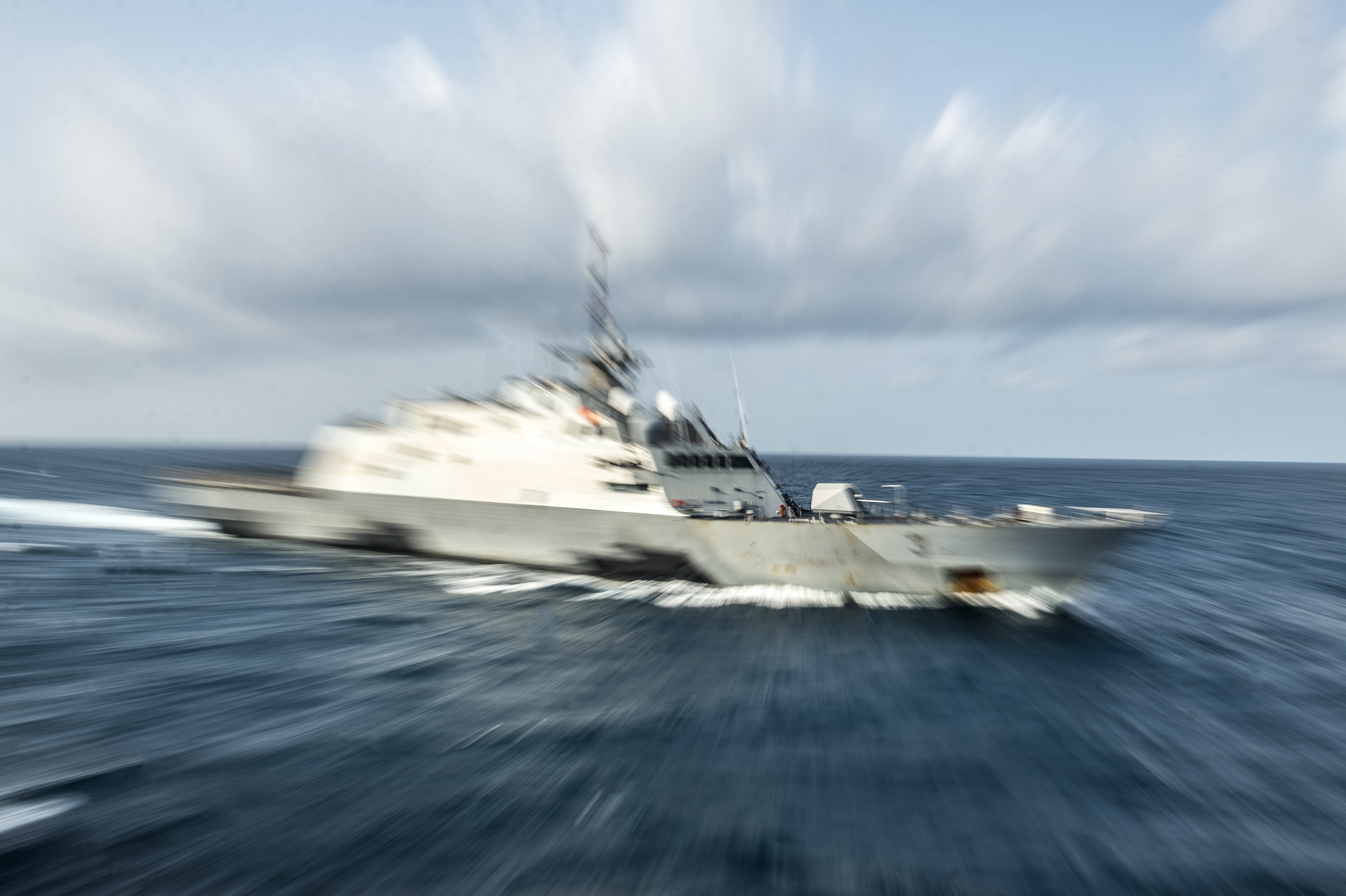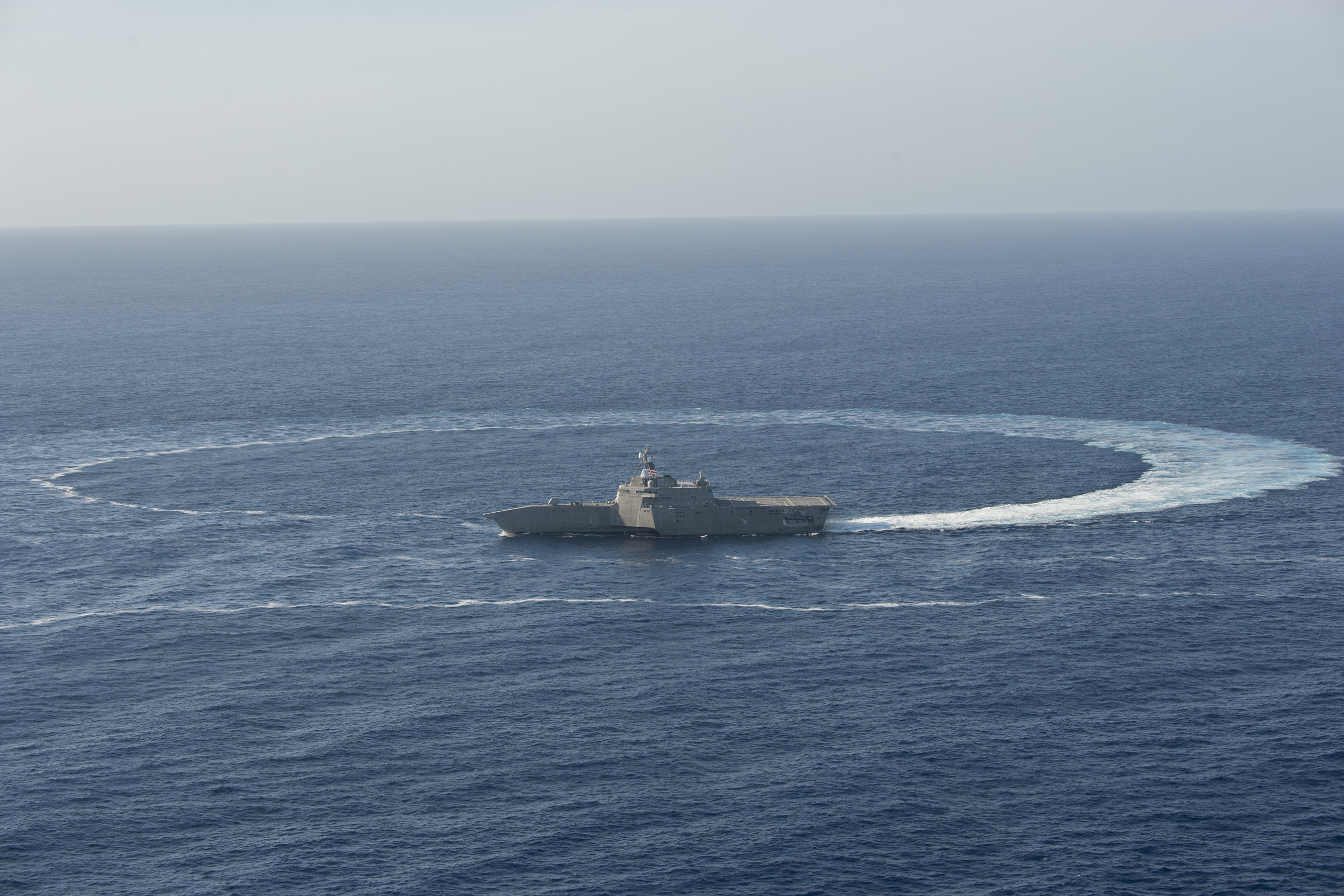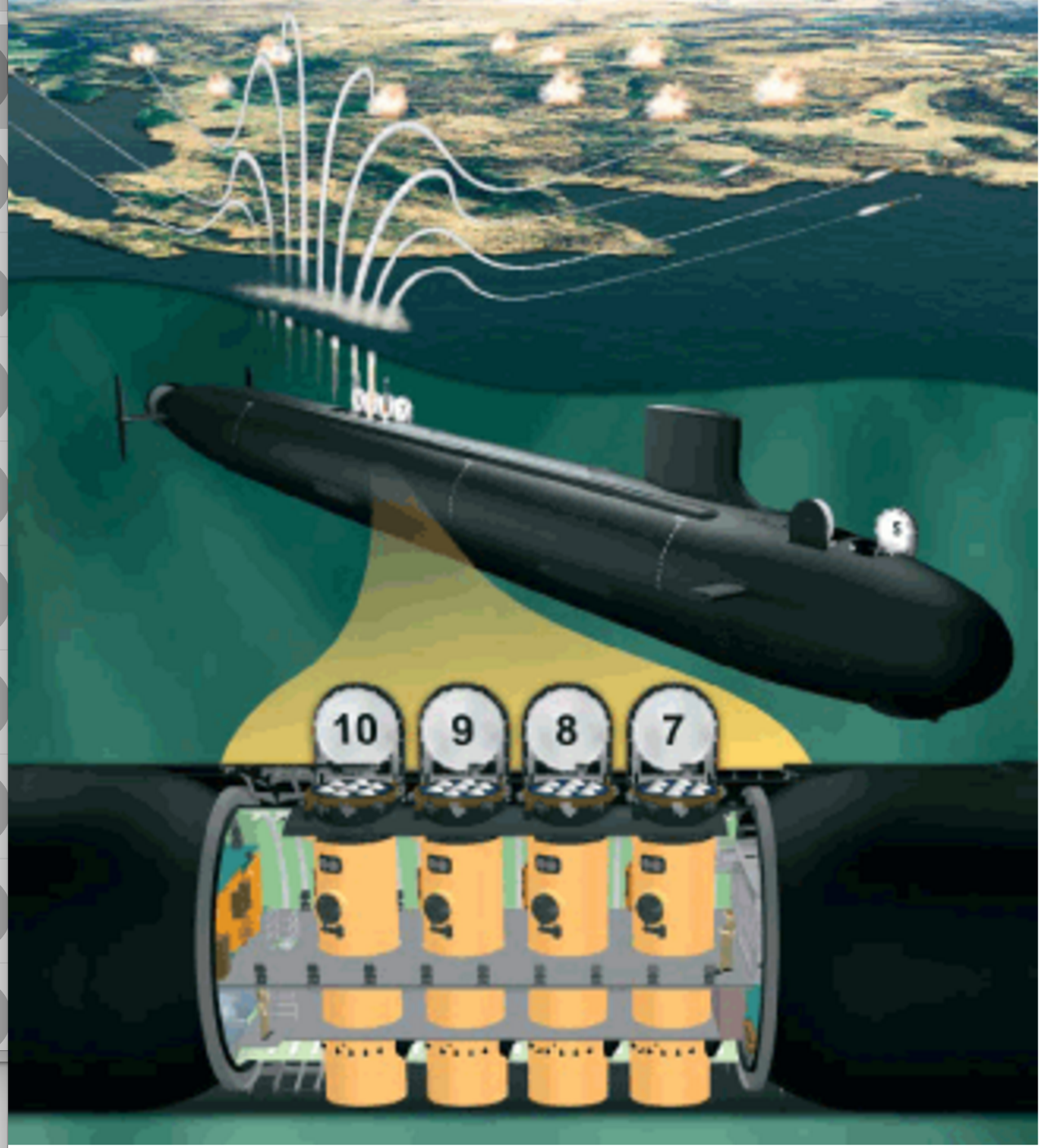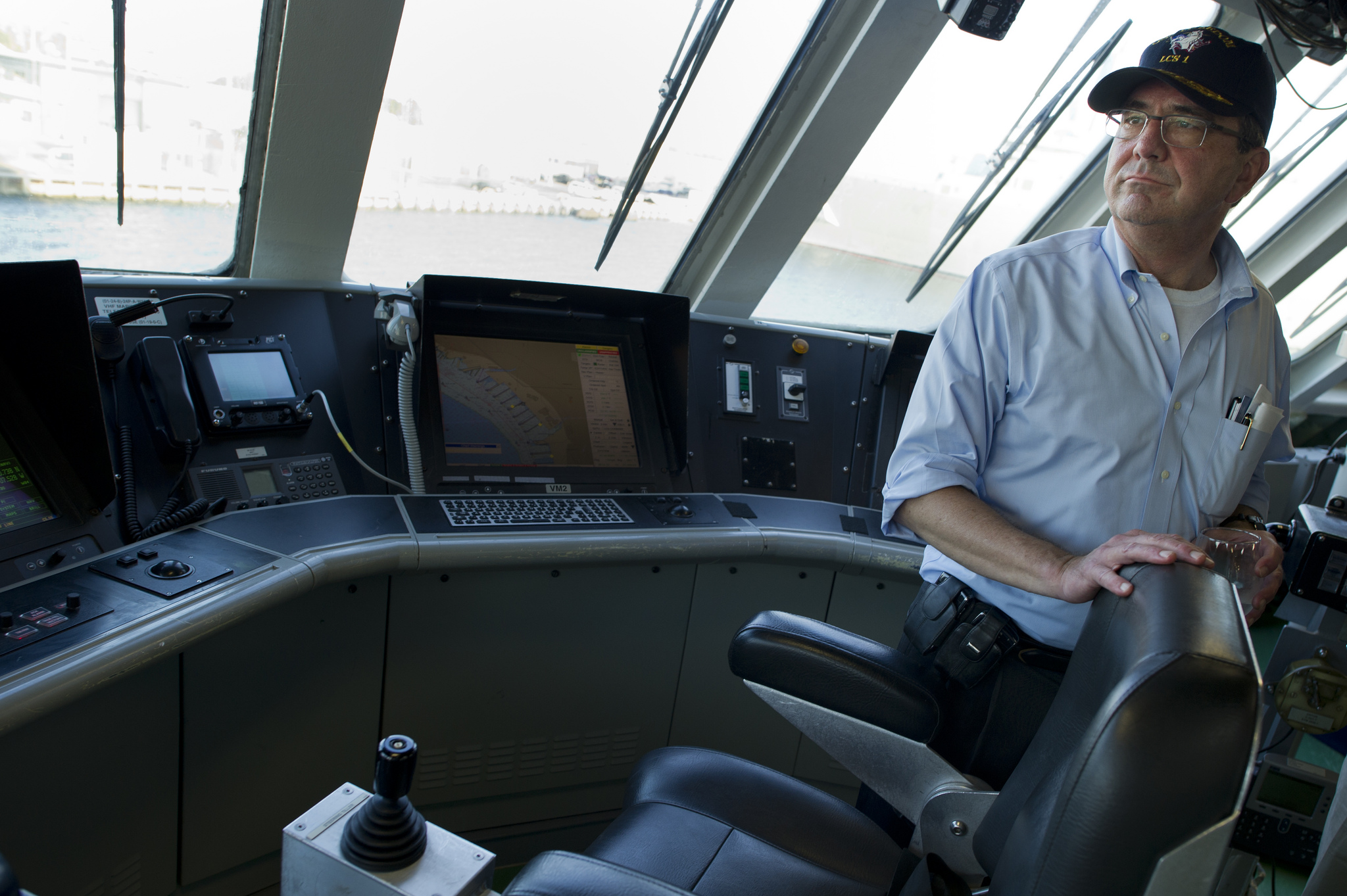
Secretary of Defense Ash Carter’s list of directives Monday to the Navy to retool its budget for Fiscal Year 2017 revealed a split in priorities between the Secretary of the Navy and the Pentagon on the future of the force.
While the reduction of the Littoral Combat Ship buy, from 52 to 40, was the bumper sticker from the four-page rebuke issued to Secretary of the Navy Ray Mabus, the context of Carter’s memo points to a larger question of differing views on the future U.S. Navy operations: an argument of presence versus posture.
Since Mabus took his post in 2009 he’s pushed hard to make new ship construction a priority for the service to maximize the Navy’s presence in the world. Carter, however, has emphasized a high-end warfighting posture over lower-end presence functions inherent in the LCS/frigate designs.
During Fiscal Year 2017 budget deliberations, Carter met with Mabus at least twice to outline his priorities, two sources familiar with the meetings told USNI News. He was unhappy when the budget that Mabus had shaped arrived and did not include the investment in the high-end systems Carter wanted.
The resulting memo Monday (from Carter to Mabus) is widely seen as a rejection of Mabus’ priority of maximizing new ship construction — in a department that was out of step with a Pentagon mandate to emphasize higher-end weapon technology.
“It was a harsh memo,” said one congressional source familiar with the deliberations. “The only thing they didn’t put in at the end was the line, ‘end of discussion’.”
For its part the Navy told USNI News the service was aware of the Carter memo and pledged to “to balance capability with capacity in our shipbuilding programs as we have always done,” read a Thursday statement. The service said further comment was inappropriate since the memo discussed fiscal year 2017 budget issues that are still not finalized.
LCS and The Third Offset

Carter and Mabus’ budget tiff comes as the Pentagon is searching for its next major technical leap (or leaps) that will give the United States a material edge over its military competitors —the way nuclear arms and guided weapons produced the first two U.S. offset strategies.
The Department of Defense wants to inject anywhere from $12-14 billion for the future years defense plan (FYDP) to explore third offset capabilities, Bryan Clark, the former special assistant to the Chief of Naval Operations and a senior fellow at the Center for Strategic and Budgetary Assessment (CSBA), told USNI News on Thursday.
And in an era where tight budgets are the norm, “something has got to give,” he said. “The Navy made it very easy to take LCS as a bill-payer.”
This is the second time in two years the LCS program has been restructured following last February’s declaration — from then-Secretary of Defense Chuck Hagel — that the Navy needed to build a tougher frigate to fill out the last 20 of the planned 52 ships.
After looking at new foreign and domestic designs and thousands of iterations of the two existing LCS designs, the Navy settled on up-gunned versions both the Lockheed Martin Freedom-variant (LCS-1) and Austal USA Independence-variant (LCS-2) with a plan for about 10 ships each.
In the pursuit of high-end capability, “I think the Navy, by only making the frigate a modestly upgraded LCS, didn’t do them any favors,” Clark said.
Carter’s new directive will trim the 20 frigates to eight ships of a single design from a single yard and would net about $2 to 3 billion in savings for the service for the five-year FYDP, Clark estimated
Combined with an additional $1.7 billion OSD injected into the DON’s budget for the FYDP, Carter—in coordination with the Director of Cost Assessment and Program Evaluation (CAPE)—set aside as much as $5 billion for high tech weapons projects.
Presence vs. Posture

Elements of the Navy and OSD have called for increasing the firepower of the Navy for a high-end conflict in the last few years.
The United States took a high-end naval warfighting holiday during the wars in Iraq and Afghanistan, when the military’s collective focus was on ground combat and counterinsurgency. For its part, the Navy was primarily focused on land strikes with Tomahawk missiles and ballistic missile defense, while other countries—particularly China—accelerated their naval development for over the course of a decade.
In his memo to Mabus, Carter laid out his priorities for the DON in numerical order:
1. To build advanced capabilities
2. To close growing gaps in naval aviation
3. To ensure sufficient ship capacity
To that end, the memo directed the Navy to invest in an additional Block V Virginia-class (SSN-774) Virginia Payload Module (VPM), 31 more F-35C Joint Strike Fighter (JSF), additional F/A-18E/F Super Hornet fighters and more SM-6 missiles for the service’s fleet of guided missile destroyers.

“The SECDEF is arguing that the balance needs to be shifted more toward future capabilities, like the Virginia Payload Module and more advanced munitions,” director of defense budget analysis at the Center for Strategic and International Studies (CSIS) Todd Harrison told USNI News on Thursday.
Additionally, Carter’s plan calls for more modernizations for Flight IIA Arleigh Burke destroyers, electronic warfare upgrades, accelerating work on a new lightweight torpedo, adding additional capability for the Tomahawk Land Attack Missile (TLAM), upgrades for the P-8A Poseidon maritime surveillance and anti-submarine warfare aircraft instead of the additional frigates.
“With the rebalance laid out this memo, our fleet will not only be larger and more effective than it is today; it will also be equipped with the weapons and capabilities it needs to win any potential war,” Carter said.
Top Down Changes

Carter’s direction for the Navy to change its budget priorities—while dramatic—is not unprecedented. Several analysts contacted by USNI News on Thursday compared the top-down changes outlined in Carter’s memo to Mabus with decisions that former secretaries of defense Bob Gates and Hagel made over the past six years to inform the Navy’s direction via resource management direction (RMD).
“When we canceled the next-generation cruiser program [in the fiscal year 2010 budget deliberations], that was in the RMD. The decision to truncate the DDG-1000 [Zumwalt destroyer], which was an OSD decision,” Clark said.
The difference in this case was the previous RMD’s were directed by OSD but were also endorsed by the Navy, he said.
“I’d argue that it’s a good thing. Those need to be the types of capabilities that we need to invest in,” Clark said. “[It’s just] the Navy and DoD will have to accept less presence for awhile.”
Still, despite the directness of Carter’s language, one defense official told USNI News the Navy might try and fight for the full total of 52 LCS and frigates.
“With the effort that went into improving the survivability and lethality [of the LCS hulls], they will no doubt seek to continue this discussion until the FY17 budget officially locks,” the official said.





